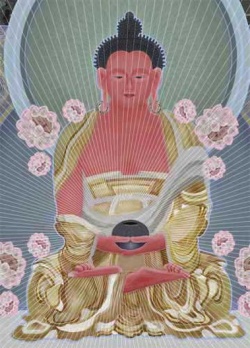Bodhisattva Path
The Buddha spoke of five vehicles, or paths, whereby sentient beings may practice Dharma in accordance with their karma and capacities. The five vehicles are that of human beings, devas, shravakas, the pratyekabuddhas, and bodhisattvas. Of these five, the shravaka vehicle is associated with the path of personal liberation (in nirvana), and the bodhisattva vehicle is associated with the Mahayana path.
The shravaka seeks personal liberation as an arhat and aspires to attain the bliss of nirvana. Bodhisattvas, on the other hand, vow to liberate all sentient beings before attaining their own liberation. In practicing the bodhisattva path, one does not renounce the shravaka path. In fact, the aspiration to self-enlightenment (bodhicitta) is one of the necessary elements of the bodhisattva path. The Mahayana path does not renounce the self-liberation of the shravaka. For a bodhisattva to renounce the shravaka path would be contradictory; the fourth vow of the bodhisattva is, in fact, "I vow to attain supreme buddhahood."
Buddhadharma is not only the taste of liberation. It is also the way of the bodhisattva. Moreover, buddhadharma has various levels and types of teachings to respond to the various dispositions of sentient beings. Sometimes this includes a graded path of Buddhism, but all of the gradations, systems and different ways to organize the Buddhist teachings point to liberation.
Master Sheng Yen interview
Of paths by which sentient beings may practice Dharma, two bring liberation:
The shravaka vehicle, associated with Theravadan Buddhism, is the path of personal liberation; the shravaka seeks personal liberation as an arhat and aspires to attain the bliss of nirvana.
On the bodhisattva path of Mahayana Buddhism (including Chan) one vows to liberate all sentient beings before attaining one's own liberation.
Source
www.dharmanet.org [[Category:]]
